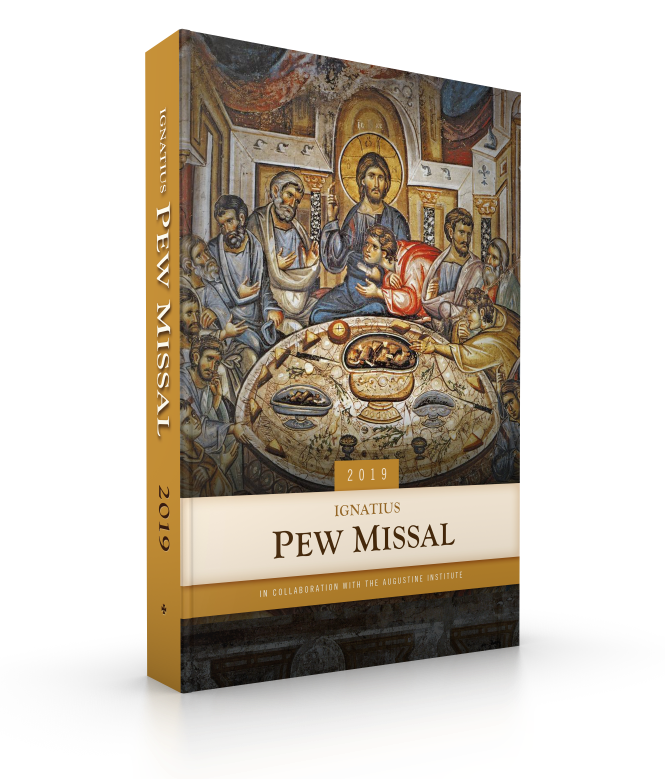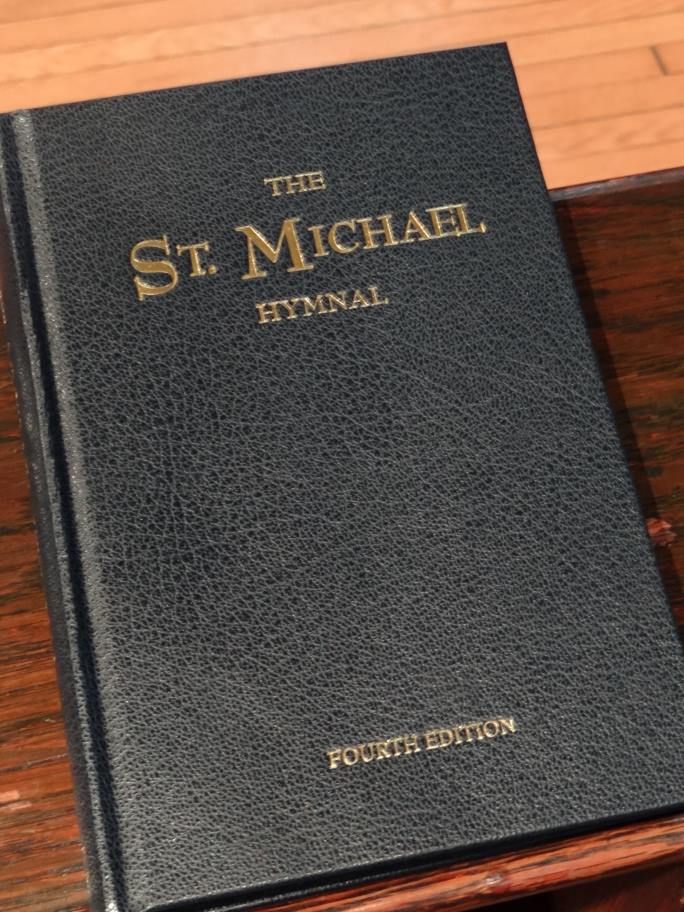Funerals
The faith of the Catholic Church always looks to our Savior’s triumphal resurrection from the grave as our only reason to hope in the bitter face of death. For Jesus Christ is the firstfruits of the glorious new life to come, and he goes to prepare a place in heaven for us who await His harvest. While we wait in faith, the Church must confront the sadness of death with great courage. She must be prepared to bring the light of Christ to a family’s mournful suffering. She accomplishes this through the funeral liturgy, whereby Christ enters the gloomy hearts of mourners and rekindles the fire of hope. The Church receives grace to raise up our drooping heads and to entrust our dead to the One who gives true life. We beg Christ’s mercy upon the souls of the dead and to lead them safely home to him.
God has made our body his Temple
Perhaps the most revealing testimony of our faith is the manner in which we treat the bodies of our deceased. The Catholic Church takes great care to preserve and honor the dignity of a human body because God himself found human flesh to be a worthy vessel for his Son, Jesus. Keeping the body whole and assigning it a carefully prepared and marked burial place signifies a crucial element of our faith: All the dead will rise again, and from our flesh we shall behold God’s face. Until that day we provide the body a holy place to rest and to return to the dust of the earth. Christ reminds all of his disciples that he too entered a grave assigned to him, and it was his empty grave on Easter morning that bore witness to the Lord’s destruction of death forever. We follow him through the grave into glory.
Preparing the body in a casket for burial in a marked grave is the preferable option for planning a Catholic funeral, as it best preserves the deepest mysteries of our faith regarding death. The Church has recognized that some circumstances should allow for cremation to take place. It is not in keeping with faith, however, to scatter ashes or preserve them in any place other than a grave. Even in cases of miscarriage parents can have their child’s remains preserved in a worthy vessel in anticipation of the funeral and burial.
Planning a Funeral
In planning a funeral, the first step is to contact a funeral home. Until the family of the deceased has met with the funeral director, and the funeral director has made contact with the parish and priest or deacon who will preside over the funeral, no other plans should be made. When a family meets with the funeral director, they will work with the parish and family to establish a date and time for the funeral. It is important to know that families should presume to have the funeral at the Church unless the number of expected guests exceeds the seating capacity of the Church.
Working with the funeral home, families will arrange such details as caskets, pall bearers, and flower arrangements, and cemetery plots. The funeral director will also contact the person responsible for providing a luncheon following the funeral. The funeral director is not at liberty to make arrangements for the funeral liturgy. These plans will be completed with the minister who will preside over the funeral.
The minister who presides over the funeral will assist the family in choosing music and musicians, Scripture readings, and other people to assist with the funeral Mass. Families should allow the priest or deacon to contact musicians and others who will participate in the liturgy. Families should not plan for a slide show, secular music, or other additions to any part of the liturgy without consulting the minister who will preside over the funeral.
When the family meets with the priest or deacon, the will be asked to select an accompanist, a vocalist, a reader, and altar servers. Each of these should be Catholics and familiar with how to perform these ministries in our parish.
The Vigil
The funeral vigil, sometimes called the “wake” or “rosary” is made up of a series of scripture readings and prayers. It takes place the evening before the funeral. During this time, if the family desires, they may include the recitation of the rosary or another devotion. The vigil is also the only appropriate time during which people can be given the opportunity to share a few words about the deceased.
The Funeral Rite Within Mass
Mass takes place in the parish, where the whole sacramental life flows from the altar of the Lord.
The Gathering
The family gathers with the priest and the ministers for the mass in the entrance of the church in the presence of the body. The casket is sprinkled with holy water and covered with a funeral pall to recall the day of baptism, when the deceased person was welcomed into the Church and made a co-heir with Christ to the life of heaven. Family members may assist in placing the pall upon the casket.
The Procession
Accompanied by a hymn, the priest, ministers, and the family enter the church, led by the crucifix, and take their places for mass while the casket is brought to a place in front of the altar. The procession reminds us of Jesus’ own journey of life leading to Calvary and how our life must follow the way he laid down before us. The processional hymn is a prayer that asks Jesus to gather us together and help us follow him to the cross.
Liturgy of the Word
God speaks to the weary hearts through his Word proclaimed in the Scriptures. He inspires in us the confidence to believe his promises made to those who love him. The family is welcome to choose the readings, as well as trained Catholic lectors to proclaim them.
Liturgy of the Eucharist
After the homily and the Prayers of the Faithful, the liturgy centers on the altar, which is prepared for the offering of Jesus’ sacrifice to God the Father. In this perfect offering we are able to join our prayers and offerings for our dead to the Lamb of God, which are received and accepted upon the Altar on High. Christ is made truly present in the bread and wine, who becomes spiritual food for the Church in Holy Communion. The family might consider choosing gift bearers to bring the offerings of bread and wine to the altar. Extraordinary ministers of the Eucharist are enlisted to help distribute Holy Communion. The parish will ask if the family wants to choose those ministers of Communion or the altar servers at the mass.
Final Commendation
At the conclusion of the funeral we commend the soul of the deceased to God’s mercy and sing a prayerful hymn of farewell. We depart with the hope that the dead now celebrate this liturgy with Christ in heaven!
Liturgical Music
Music for use in the celebration of mass is of a unique quality. The Church calls it sacred music. Its function in the liturgy is to add solemnity to the prayer of man by elevating it to a more perfect and beautiful expression. All music in the mass is first and foremost the faithful’s prayer to God. Anyone who plays instruments or leads song in the mass is a trained leader of prayer. Sacred music is carefully chosen to support the action taking place at that moment in the mass. The words of a hymn must bear the great weight of the mystery of Christ unfolding in our presence. While secular music has its own proper place in human culture, it can never adequately convey the deep truths contained in the mass. Liturgical music must also be an authentic expression of prayer, meaning it is not artificial, canned, recorded, or otherwise reproduced for use in the mass. Music is authentic when it is the fruit of the gift that come from within the hearts of the faithful. Singing is our contribution that we add to worship and place, like a gift, upon the altar of the Lord. The true beauty of a mass hymn is the faith in the heart of those singing it.
In the planning of music for the funeral mass, the hymns should be sacred, authentically expressive of the Catholic Faith, congregational (can be sung by the whole assembly), and ideally, among those hymns available in the hymnal. Four hymns are chosen:
Processional (Opening) Hymn:
Its purpose is to open the celebration, foster the unity of those who have been gathered, introduce their thoughts to the mystery of the liturgical celebration, and accompany the procession of the priest and ministers.
Offertory Hymn:
Its purpose is to accompany the procession bringing the gifts of bread and wine to the altar, which will become the Body and Blood of Jesus Christ.
Communion Hymn:
Its purpose is to express the spiritual union of the communicants by means of the unity of their voices, to show gladness of heart, and to bring out more clearly the “communitarian” character of the procession to receive the Eucharist.
Recessional (Closing) Hymn:
Its purpose is to accompany the procession of the priest, ministers, the casket, and the family to the place of burial. It reminds each of us to go now and do good works, praising and blessing God for all he has done.
The Funeral Rite Outside of Mass
For a serious reason, the funeral can be celebrated outside of Mass. In those cases, the funeral is the same as at Mass, but there is no liturgy of the Eucharist, no preparation of gifts hymn, and no communion hymn. There is also no need for altar servers.

For funerals at Our Lady of the Sacred Heart in Martin, please choose songs from this hymnal.

For funerals at Our Lady of Victory in Kadoka, please choose songs from this hymnal.

